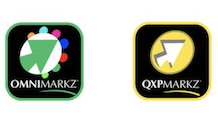According to Jeff Barnes, Light Field Lab, writing for Digital Signage Today, taking inspiration from popular sci-fi movies, some of today’s manufacturers are expanding the capabilities of video wall technology, and by proxy, the future use cases of digital signage.
Digital signage technology is constantly evolving, presenting new opportunities for the world of business to meet ever-changing consumer needs. Gartner predicts that 25% of people will spend at least one hour per day in the metaverse by 2026. Whether that’s for work, shopping, education or entertainment, AR, VR and mixed reality experiences are poised to be more accessible than ever, prompting consumers to expect digital signage experiences that engage them without breaking their state of immersion.
Redefining what was previously thought impossible, companies like Light Field Lab are exploring ways to break through 2D flat-panel technology limitations with true 3D holographic display ecosystems. From immersive in-world retail storytelling to experiential signage that interacts with viewers, 3D holographic displays are poised to transform signage with new metaverse-like applications.
Metaverse-like retail-tainment merging physical and digital worlds
In recent years, efforts to pull consumers out of the home and back to the storefront or venue have resulted in unique brand activations and installations coined ‘retail-tainment’ opportunities. Aimed at turning the retail environment into a piece of storytelling content, ‘experience’ stores have become increasingly popular as an effective way to immerse customers in an interactive buying experience. High profile brands like Marvel have invested resources in experiences like Avenger’s S.T.A.T.I.O.N., a retail experience store that pulls consumers out of reality and into a replica of its blockbuster movie set with interactive screens and movie props. When the short story ends, consumers run through the experience store where limited edition uniforms and merchandise are pushed as an attraction before returning to ‘the real world’.
As we move closer to a 3D metaverse landscape, brands could animate in-store processes with 3D holographic technology, merging physical and digital worlds to create real-world experiences that engage and motivate people with more realistic projections of reality. Looking ahead, products could be displayed without even needing to host them on the show floor, replaced by free-standing, fully interactive digital 3D models. Imagine handling merchandise like, trying on a watch, a pair of earrings or a hat, without ever having to pull the physical item out of its packaging.
Metaverse-like digital signage, advertising and activations
Interactive signage has been at the forefront of digital advertising and signage. However, as today’s flat panel manufacturers reach a ceiling for scaling display size, resolution and density to sufficient levels to support true 3D content, 2D displays are limited by how well they can immerse customers and engage their senses in new ways.
Select digital signage activations seen in Times Square or Shinjuku like Amazon’s Wheel of Time launch and the Giant 3D Cat, have made clear attempts to break through the traditional 2D screen display and ‘wow’ crowds with new degrees of content immersion. While these activations are novel in their execution, the technologies employed do not project a true object in space that allows the human eye to focus on an image like it would in the real world. Along with some creative content design, these kinds of 2D displays look impressive from one distinctive vantage point. However, the illusion quickly reverts to traditional flat imagery when the viewer steps outside of the screen’s forced perspective sweet spot.
The next generation of light field displays will allow audiences to realise more life-like imagery, volume and depth with a significantly wider field of view. ‘Real images’ as defined by optical physics can be recreated by a 3D holographic display with a massive number of viewing angles of the scene that change with point of view and location. When a holographic display allows you to see objects as you move your head in any direction, your brain tells you, ‘this is real.’
In addition, future digital signage solutions must adapt to the spaces in which they are deployed in order to meet the communication needs of tomorrow’s viewers. 3D holographic display technologies can change a space without the need for large-scale construction or intervention — enabling brands to cater to trends and purchasing habits in real-time. It’s like Fast Fashion for signage, but without the environmental impact. Moreover, combining 3D holographic displays with haptics and sensory technology, will enable brands to leverage interactive capabilities of 3D holographic signage to power characters, objects and elements of a scene to literally jump out of a display.
Projecting the future of displays
As 3D holographic display technology continues to evolve, it poses a variety of benefits as integrators and brands adapt marketing to meet a future of metaverse-primed consumers. With technology like SolidLight, future 3D video wall experiences won’t be illusions of perspective, but rather real-world digital characters and objects that reach beyond the screen with holographic realism and high-resolution scene information that changes depending on the viewing angle and location in ways that mimic the real world. The applications are limitless.
This article appears in Digital Signage Today.














